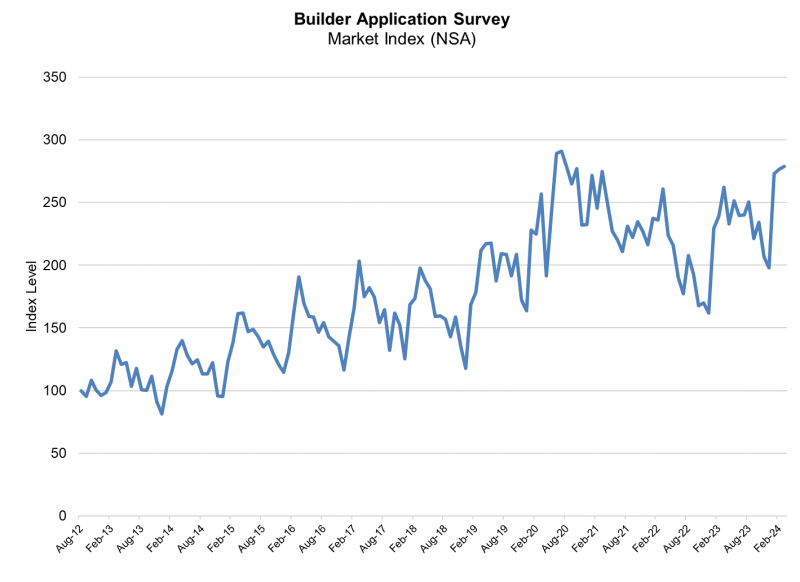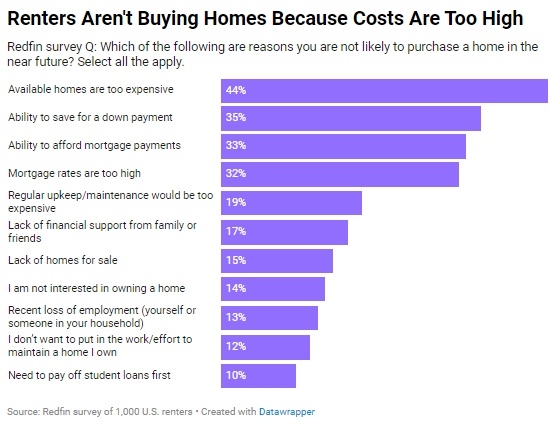Advertisement
Clear Capital survey finds quarter-over-quarter price gains reach 7.9 percent

Clear Capital, a provider of data and solutions for real estate asset valuation, investment and risk assessment, has released its Home Data Index (HDI) Market Report. Patent pending rolling quarter technology significantly reduces the multi-month lag time associated with other indices to help investors, loan servicers and individual buyers and sellers make more informed, timely and profitable decisions. National home prices experienced 7.9 percent quarter-over-quarter gains, accompanied by slowing year-over-year price gains of 8.1 percent (down from 8.8 percent as reported last month). Real estate-owned (REO) saturation continued to drop nationally, falling to 22.7 percent—19.8 percentage points less than its peak in the first quarter of 2009. Amidst regional volatility, the West continues to see relatively stable quarterly price changes (2.7 percent through July) have ranged from 1.6 percent to 2.7 percent since the start of 2010.
The large quarter-over-quarter gains reported last month for the highest performing markets continued upward influenced by the tail end of the first-time homebuyer tax credits. Cleveland, Ohio (29.2 percent) and Memphis, Tenn. (24.2 percent) remain atop this month's list, with Cleveland leapfrogging Memphis for the top position.
Home prices in the Charlotte, N.C. Metropolitan Statistical Area (MSA) continue to demonstrate greater stability than the nation as a whole. In the face of the economic downturn that cut home prices nationally by more than 30 percent since the national peak of the housing market in mid-2006, Charlotte has managed only a 13.1 percent loss since its market peak in mid-2007. Currently, Charlotte's 2.5 percent year-over-year price change undershoots the national 8.1 percent gain.
"Home prices continue to show positive growth from the first quarter of the year," said Dr. Alex Villacorta, senior statistician with Clear Capital. "This trend indicates that the initial upward momentum created by the tax credit expiration is being sustained. While quarterly gains are showing strong momentum across the country, these recent price advancements are just the latest turn in a volatile housing market that has seen 'W' shaped price trends over the last two years. An interesting exception to this pattern is the West region, which has seen a stable and sustained growth since the trough of the downturn in the first quarter of 2009. Despite the up and down behavior of prices since the worst of the housing downturn, national prices are still up 13.6 percent, providing a cushion against potential future declines and the start of a double-dip."
National/four region market overview (July 2009-July 2010)
Stability in the housing market has been elusive across the nation over the past few years, but amid this volatility, the West has emerged with relatively stable home prices compared to the other three regions. The West's quarterly appreciation has ranged from -1.6 to 2.7 percent since the start of 2010. In contrast, appreciation ranges in the Midwest (-9.4 percent to 14.7 percent) and South (-4.2 percent to seven percent) regions represent more dramatic price swings during the same period, while the Northeast (-4.4 percent to 6.9 percent) still trails the West, but is becoming more stable.
While many external factors (including unemployment and investor activity) contribute to current price trends, the effects of the recent homebuyer tax credits are seemingly magnified within the lower-priced markets of the Midwest, while reduced in the higher-priced coastal markets. To illustrate, the recent tax credit's cap of $8,000 contributes a larger share of the purchase price for a home in the Midwest and South where the median home price is just below $150,000, than in the higher-priced East and West regions where median prices typically top $210,000. In some local markets where prices dip below $100,000, the effects of the tax credits are even more pronounced.
Compared to last month's report, national home prices experienced an improved quarter-over-quarter price gain of 7.9 percent, accompanied by a slowing year-over-year price gain of 8.1 percent. At varying magnitudes, this pattern of improving quarterly gains and slowing yearly gains was present across all four regions. Nationally, REO saturation continued its steady decline, falling to 22.7 percent, a 1.9 percentage point drop from last month's report, and 19.8 percentage point drop from its peak in the first quarter of 2009.
Metro markets (July 2009-July 2010)
The large quarter-over-quarter gains reported last month continue upward influenced by the tail end of the homebuyer tax credits. However, slowing year-over-year gains among twelve of the fifteen highest performing major markets above indicate this growth hasn't maintained last year's momentum. Elevated volatility continues in these markets as quarterly prices jumped an average of 6.3 percentage points, and only New Orleans, La., Pittsburgh, Penn., and Detroit Mich. improved their yearly price gains from last month's report.
Cleveland, Ohio and Memphis, Tenn. remain atop the highest performing markets this month, with Cleveland leapfrogging Memphis for the top position. Note this list is largely comprised of markets from the Midwest and South, and none of the West's more stable markets are present. The combined $142,000 median sale price for these markets, including substantially lower-priced markets in Michigan, Ohio, Missouri and Tennessee, suggests the homebuyer tax credits had increased influence over these markets during this past rolling quarter.
REO saturation continued to exert less influence among the highest performing markets, dropping an average 2.7 percentage points from last month's reported rates. The Ohio markets of Columbus and Dayton led the way, experiencing a five percentage point decline in REO saturation rates.
The exclusive presence of positive quarterly gains within this month's lowest performing major markets list is especially notable given that the majority of these markets are among the more troubled real-estate markets of California, Florida and Arizona. With a quarterly appreciation spread of only 2.1 percentage points, the price increases within this group of markets was remarkably stable when compared to the highest performing major markets which experienced a 19.7 percent spread. Additionally, REO saturation rates showed improvement, declining in all the lowest performing markets, while yearly gains did begin to slow in-line with the national pattern.
Baltimore, Md. saw the largest quarter-over-quarter improvement in home prices compared to last month's report, rising from a -1.8 percent price change to a 2.9 percent price change this month. This was sufficient to cut yearly losses to 2.7 percent, allowing Baltimore to join Miami, Fla., Honolulu, Hawaii, Las Vegas, Nev., and Riverside, Calif. as the five markets with improving yearly price trends. The remaining ten markets saw their year-over-year price trends slow by an average rate of 1.4 percentage points from those observed last month.
Micro markets (July 2009 - July 2010)
This section highlights a single market every month with a deeper dive into how the micro- and macro-markets relate to each other.
Home prices in the Charlotte, N.C. micro markets have demonstrated greater stability than the nation as a whole. In the face of the economic downturn that cut home prices nationally by an average of 31.6 percent since the national peak of the housing market in mid-2006, Charlotte managed to delay home price declines until mid 2007 (ultimately experiencing a -13.1% price change). Over the last year, Charlotte's 2.5 percent price change also undershoots the national 8.1 percent gain. This general stability extended to many of Charlotte's micro markets, although some of the nuances of market timing shift price changes among Charlotte's individual markets.
Charlotte's best performing micro market, ZIP code 28214, outperformed the Charlotte MSA with prices climbing 11.4 percent over the past year. Located west of downtown Charlotte and north of the Charlotte International Airport, this micro market matched the metro area's price bottom at the beginning of 2009. However, REO saturation rates had risen more rapidly in this market (spiking at 54 percent), leading to the onset of price declines a year in advance of the greater Charlotte MSA. Ahead of the curve, the stage was set for this year's gains, as greatly reduced prices attracted newly incentivized buyers. These buyers helped drive prices of the lower-priced segment (homes valued less than $85,000) upward while at the same time reducing the REO saturation rate to its current level of 22.6 percent.
Concurrently, the higher-priced segment of this market continued to struggle with price declines, a further indication of the focused demand on lower priced homes.
The micro market just south of the University of North Carolina at Charlotte and east of downtown (ZIP code 28213) has also followed a similar price pattern over the last year, except lighter REO pressures delayed the price declines. This subtle shift has led to a year-over-year price change of -13.3 percent. The slightly higher-priced homes of this micro market experienced a slower rate of price growth and lower peak of REO saturation (41 percent), delaying the onset of price declines until late 2007. With a majority of homes selling for more than $125,000, recent demand hasn't been sufficient to accelerate the recovery of this market, leaving it lagging slightly behind the Charlotte MSA despite maintaining a similar, yet offset, price pattern.
For more information, visit www.clearcapital.com.
About the author





